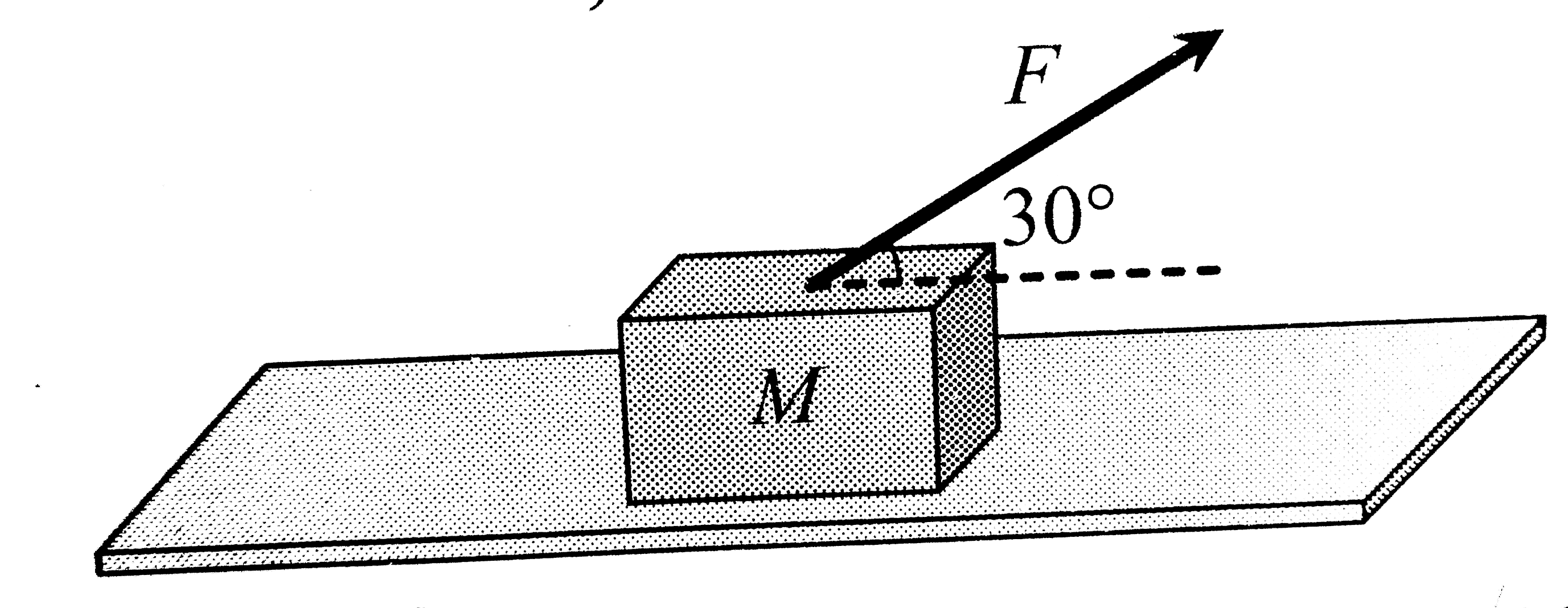A block is projected along a rough horizontal road with a speed of 10 m/s. If the coefficient of kinetic friction is 0.10, how far will it travel before coming to rest?
To solve the problem of how far a block will travel before coming to rest when projected along a rough horizontal road, we can follow these steps:
Step 1: Identify the Given Data
- Initial speed of the block, u=10m/s
- Coefficient of kinetic friction, μ=0.10
- Acceleration due to gravity, g=10m/s2
Step 2: Calculate the Normal Force
Since the block is on a horizontal surface, the normal force R acting on the block is equal to its weight:
R=mg
where m is the mass of the block. However, we will not need the mass to find the distance traveled.
Step 3: Calculate the Frictional Force
The frictional force Fk acting on the block is given by:
Fk=μR=μmg
Substituting the values:
Fk=0.10×mg
Step 4: Determine the Acceleration Due to Friction
Using Newton's second law, the frictional force causes a deceleration (negative acceleration) on the block:
Fk=ma
Thus,
μmg=ma
Cancelling m from both sides (assuming m≠0):
μg=a
Substituting the values:
a=0.10×10=1m/s2
Since this is a deceleration, we take it as negative:
a=−1m/s2
Step 5: Use the Kinematic Equation to Find Distance
We can use the kinematic equation:
v2=u2+2as
where:
- v=0m/s (final velocity when the block comes to rest)
- u=10m/s (initial velocity)
- a=−1m/s2 (deceleration)
- s is the distance traveled before coming to rest.
Substituting the values:
0=(10)2+2(−1)s
0=100−2s
2s=100
s=1002=50m
Conclusion
The block will travel 50 meters before coming to rest.
---
- Initial speed of the block, u=10m/s
- Coefficient of kinetic friction, μ=0.10
- Acceleration due to gravity, g=10m/s2
Since the block is on a horizontal surface, the normal force R acting on the block is equal to its weight:
R=mg
where m is the mass of the block. However, we will not need the mass to find the distance traveled.
The frictional force Fk acting on the block is given by:
Fk=μR=μmg
Substituting the values:
Fk=0.10×mg
Using Newton's second law, the frictional force causes a deceleration (negative acceleration) on the block:
Fk=ma
Thus,
μmg=ma
Cancelling m from both sides (assuming m≠0):
μg=a
Substituting the values:
a=0.10×10=1m/s2
Since this is a deceleration, we take it as negative:
a=−1m/s2
We can use the kinematic equation:
v2=u2+2as
where:
- v=0m/s (final velocity when the block comes to rest)
- u=10m/s (initial velocity)
- a=−1m/s2 (deceleration)
- s is the distance traveled before coming to rest.
0=(10)2+2(−1)s
0=100−2s
2s=100
s=1002=50m
The block will travel 50 meters before coming to rest.
Topper's Solved these Questions
Similar Questions
A small bead of mass m is given an initial velocity of magnitude v0 on a horizontal circular wire. If the coefficient of kinetic friction is μk, determine the distance travelled before the collar comes to rest.
View SolutionA bullet of mass 0.01 kg is fired horizontal into a 4 kg wooden block block at rest , on a horizontal surface. The coefficient of kinetic friction between the block and surface is 0.25 the combination moves 20 m before coming to rest . With what speed did the bullet strike the block ?
View Solution
Knowledge Check
The wheels of an automobile are locked as it slides to a stop from an initial speed of 30.0 m/s. If the coefficient of kinetic friction is 0.600 and the road is horizontal, approximately how long does it take the car to stop?
A4.22sB5.10sC8.75sD10.4sA block placed on a rough harizontal surface is imparted a velocity of 10 m/s. the coefficient of kinetic friction between the block and the surface is 0.5 and g=10m/s2. How much distance the block will cover, before coming to rest?
A5 mB7.5 mC12 mD10 mA body is projected up along a rough inclined plane of inclination 45∘ . The coefficient of friction is 0.5. Then the retardation of the block is
Ag2√2Bg2C3g2√2Dg√2
A 250 g block slides on aeroug horizontal table. Find the work donen by the frictinal force in bringing the block to rest if it is initially moving at a speed of 40 cm/s. If the friction coefficient between te table and the block is 0.1 how far does the block move before coming to rest?
View SolutionIf a charged particle is projected on a rough horizontal surface with speed v0. Find the value of dynamic coefficient of friction, if the kinetic energy of system is constant.

View SolutionA block of mass m starts at rest at height on a frictionless inclined plane. The block slides down the plane, travels across a rough horizontal surface with coefficient of kinetic friction μ and compresses a spring with force constant k a distance x before momentarilly coming to rest. Then the spring extends and the block travels back across the rough surface, sliding up the plane. The block travels a total distance d on rough horizontal surface. The correct experssion for the maximum height h' that the block reaches on its return is :

View SolutionA block of mass m=5kg is resting on a rough horizontal surface for which the coefficient of friction is 0.2 . When a force F=40N is applied, the acceleration of the block will be (g=10m/s2) .

View SolutionOn a rough horizontal surface, a body of mass 2 kg is given a velocity of 10 m / s . If the coefficient of friction is 0.2 and g=10m/s2, the body will stop after covering a distance of
View Solution
